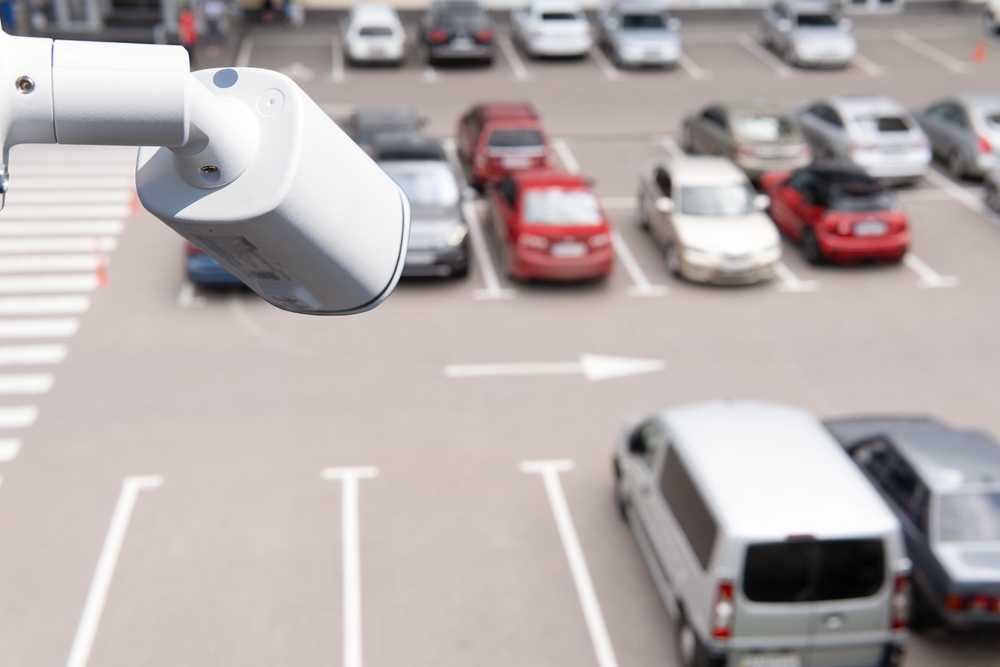The Use of FoV in Business Security Cameras
Field of view (FoV) refers to the extent of the observable world that a camera can capture at any given moment. Measured in degrees, it determines how wide or narrow an area the camera covers. The choice of FoV is pivotal in surveillance, as it influences the effectiveness of business security cameras in different scenarios.
Wide Field of View
Wide FoV cameras, typically offering between 100° to 180°, are designed to cover large areas. This makes them ideal for monitoring expansive spaces like retail floors, parking lots, or large storerooms. The broader perspective is excellent for general surveillance, allowing businesses to oversee activities across a wide area with fewer cameras. However, the trade-off is in the level of detail; distant objects may appear smaller and less distinct.
Applications:
- Retail Spaces: Oversee customer and employee activities across the entire store.
- Parking Lots: Monitor vehicle movements and detect suspicious activities over a broad area.
- Warehouses: Keep an eye on large storerooms for general security and operational purposes.
Narrow Field of View
Narrow FoV cameras, often featuring angles less than 45°, are tailored for focused surveillance. These cameras provide a closer view of a specific area, making them suitable for monitoring points of high interest or value, like safes, cash registers, or entrances. The concentrated focus allows for more detailed imagery, which is crucial for identifying faces, reading license plates, or observing hands during transactions.
Applications:
- Point of Sale Terminals: Monitor transactions closely to deter and document theft or fraud.
- Entrance and Exit Points: Capture clear images of individuals entering or leaving the premises.
- Sensitive Areas: Keep a close watch on areas housing valuable items or confidential information.
Variable Field of View
Variable FoV cameras, such as those with zoom capabilities (optical or digital), offer the flexibility to adjust the FoV according to specific needs. PTZ (Pan-Tilt-Zoom) cameras fall into this category, enabling operators to remotely control the camera to focus on different areas as needed. This adaptability is invaluable in dynamic environments where the area of interest can change frequently.
Applications:
- Multi-Purpose Spaces: Adjust the FoV based on the current use of the space, such as conference rooms or event halls.
- Perimeter Surveillance: Zoom in for a detailed view of a breach or zoom out for a general overview of the perimeter.
- Retail with Changing Layouts: Adapt to different store layouts or special displays that require varied focus.
Specialized Field of View
Some business environments may require specialized FoV configurations. Fisheye or 360-degree cameras provide an expansive view, suitable for complete area surveillance with a single device. These are often used in combination with software that corrects the fisheye distortion, allowing for a more natural view of the space.
Applications:
- Central Monitoring: In locations like lobbies or open-plan offices where a panoramic view is beneficial.
- High-Risk Areas: Complete coverage in areas where blind spots are not acceptable, such as high-security zones.
- Efficient Coverage: Reduce the number of cameras needed for full coverage, ideal for budget-conscious businesses.
Field of View and Image Quality
The choice of FoV also impacts image quality. Wide FoV may lead to distortion at the edges, known as barrel distortion, while narrow FoV might miss peripheral activities. Business security cameras must balance FoV with resolution and placement to ensure optimal image quality.
Legal and Ethical Considerations
It’s essential to consider privacy laws and ethical issues when choosing FoV. Overly broad surveillance, especially in private areas, can infringe on individual privacy rights. Businesses should aim for adequate coverage while respecting the reasonable expectation of privacy.
Conclusion
The field of view in business security cameras is a critical factor that influences their effectiveness in various surveillance scenarios. From wide-angle coverage for general monitoring to narrow focus for detailed observation, understanding and selecting the appropriate FoV is key to effective security camera deployment. Businesses must consider their unique security needs, the specific areas they need to monitor, and the balance between coverage and detail when choosing the right FoV for their security cameras. With the right FoV, security cameras can provide comprehensive surveillance, deter crime, and gather crucial evidence, all while adhering to legal and ethical standards.

